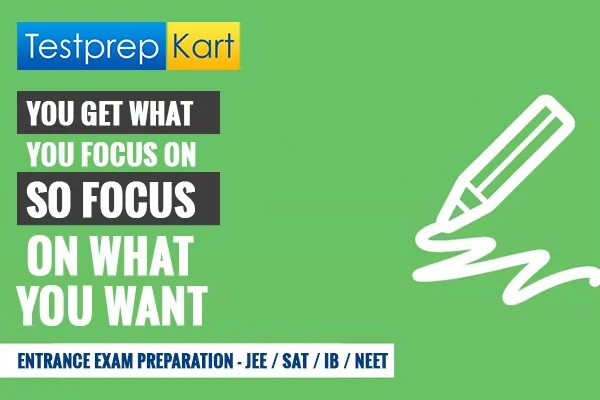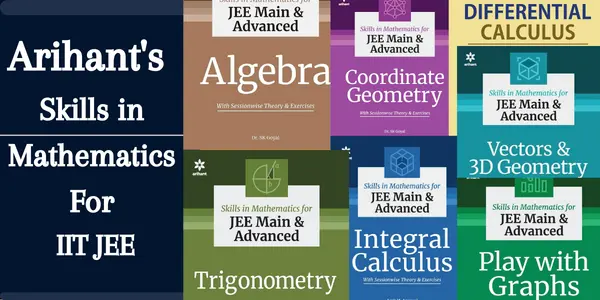Understanding and solving the Digital SAT / PBT SAT English module passages
The Structure of Prose
Finding Patterns: What Is the Structure of the Passage? (Key Question)
SAT passages are chosen for both their content and their structure. A good piece of writing is like a good painting; it must have effective structure. Looked at a different way, a good piece of writing is a unique journey through “narrative space,” “argument space” or “analysis space.” A good reader – particularly on the SAT – recognizes how a good piece of writing moves through this space.
Understanding a SAT passage means understanding its parts. Those parts have a sequence, like the stops on a journey. This journey can be summarized with a line through “prose space,” just as a real trip can be summarized with a red line through a geographical map. Of course, there are many ways of planning a journey, and there are many possible paths through a “prose space.” Usually, though, a piece of prose travels from left to right from task to task in the “spaces” shown below. You might think of the boxes below as “cities” that must be visited in the journey, and the ovals as the optional sites you can visit within each city.
Narrative space

This path describes the basic structure of a story in which a man’s wife is murdered (crime), he purses the criminal (adventure), discovers that his wife only staved her own death and ran off with another man (revealing experience) and becomes more aware of this vulnerability to deception (transformation).
Argument Space

This path describes the basic structure of an argument in which the author states that a particular philosopher’s ideas are harmful (evaluation), explains why she believes this (explanation), gives an example of the potential harm of those ideas (example), and then discusses how this evaluation should affect how we think (implication).
Analysis Space

This path describes the basic structure of an argument in which the author states that a particular philosopher’s ideas are harmful (evaluation), explains why she believes this (explanation), gives an example of the potential harm of those ideas (example), and then discusses how this evaluation should affect how we think (implication).
About the structure of prose:
The 12 angry men - This is truly a timeless piece of art. The whole movie revolves around the simple yet very important theory of reasonable doubt.
About the Author
Anne-Merie Johanes earned her MA in English language and literature from the University of Michigan. A former subject matter expert turned professional writer and editor, she is dedicated to supporting the educational goals of students from all backgrounds.
Video - 1
Video Link 1- https://data.testprepkart.com/Videos/AI%20Videos/AI1.mp4
In a New York City courthouse, a trial is underway for the murder of a man. The defendant is an 18-year-old boy who hails from a slum. He is accused of stabbing his father to death. The trial has reached its final stage, and both the prosecution and defense have presented their closing arguments. The judge gives instructions to the jury, instructing them to decide whether the accused is guilty of murder. The judge stresses that if there is any reasonable doubt as to his guilt, the jury must return a verdict of not guilty. However, if they find the defendant guilty, a mandatory death sentence will be imposed. The judge urges the jury to deliberate carefully before rendering a verdict.
Video - 2
Video Link 2- https://data.testprepkart.com/Videos/AI%20Videos/AI2.mp4
After closing arguments in a New York City courthouse, a jury is instructed by a judge to deliberate on the guilt of an eighteen-year-old boy accused of murdering his father. The judge states that if there is any reasonable doubt of his guilt, the verdict should be not guilty, but a guilty verdict will result in a mandatory death sentence.
The jury convenes in a private room, where they begin deliberating. It becomes clear early on that most of the jurors believe the boy to be guilty and plan to return a quick verdict. However, one juror, Juror 8 (played by Henry Fonda), votes not guilty, believing that they should discuss the case before coming to a decision.
This angers some of the other jurors, particularly Juror 7 (Jack Warden), who has plans to attend a baseball game that evening, and Juror 10 (Ed Begley Sr.), who holds prejudiced beliefs about people from slum backgrounds.
After a series of heated arguments and discussions, Juror 8 in "12 Angry Men" convinces the other jurors to consider the possibility of reasonable doubt in the case against an eighteen-year-old boy from a slum accused of stabbing his father to death. Juror 8 believes that the evidence is circumstantial and that the boy deserves a fair deliberation. He questions the reliability of the two witnesses to the murder, the rarity of the murder weapon, and the overall questionable circumstances of the case.
Although several of the jurors hold personal prejudices and biases, Juror 8 continues to advocate for the boy's innocence. However, after a prolonged period of deliberation, Juror 8 reluctantly agrees that he has only managed to hang the jury. He then proposes another vote by secret ballot, in which he will abstain from voting, and if the other 11 jurors are still unanimous in a guilty vote, he will acquiesce to their decision.
After the secret ballot, a new "not guilty" vote appears, which leads to intense criticism from Juror 3, who accuses Juror 5 of changing his vote out of sympathy for slum children. Juror 9 then reveals that he changed his vote after considering Juror 8's points, showing that Juror 8's advocacy for reasonable doubt has swayed at least two jurors. The film's central conflict is thus resolved as the jury continues deliberating, now with a more open mind and willingness to discuss and consider all points of view.
Video - 3
Video Link 3- https://data.testprepkart.com/Videos/AI%20Videos/AI3.mp4
Juror 8 argues that one of the witnesses, an elderly man who claimed to have heard the boy yell "I'm going to kill you" shortly before the murder took place, could not have heard the voices as clearly as he had testified due to an elevated train passing by at the time. He further points out that saying "I'm going to kill you" is a common phrase used in anger, which does not necessarily indicate a serious intent to kill. Juror 5, who had grown up in a slum, changes his vote to "not guilty" after considering Juror 8's points.
Juror 11 then raises another doubt, questioning whether it is reasonable to assume that the defendant would have fled the scene after cleaning the knife of fingerprints but leaving it behind, only to return three hours later to retrieve it from his father's chest. After discussion, Juror 11 changes his vote to "not guilty". Juror 9, who had previously expressed his admiration for Juror 8's bravery, notes that it is now 9-3 in favor of acquittal.
The remaining jurors gradually change their votes, each convinced by Juror 8's argument and the mounting evidence of reasonable doubt. Juror 3, who has a personal grudge against young men, is the last to change his vote. After an intense emotional outburst, he breaks down and changes his vote, making the verdict unanimous: not guilty. Juror 8 then reveals that he had only wanted to talk about the case, and had not necessarily believed the defendant was innocent. The jurors leave the courthouse, each having gained a newfound respect for the American justice system.
Video - 4
Video Link 4 - https://data.testprepkart.com/Videos/AI%20Videos/AI4.mp4
Juror 8 continues to question the witness's reliability, pointing out inconsistencies in his testimony. He notes that the witness had a clear view of the murder through the windows of a passing train, yet had worn glasses with a reported prescription of 75 diopters, which would make it impossible for him to have seen the murder clearly.
Juror 8 then discusses the defendant's alibi, pointing out that it was entirely possible for the defendant to have been at the movies at the time of the murder, as he claimed, despite the prosecution's argument that the alibi was fabricated.
As the deliberation continues, tensions rise and personal prejudices are revealed. Juror 3 becomes increasingly agitated and vocal in his belief that the defendant is guilty, while Juror 8 remains calm and focused on the evidence.
When Juror 3 explodes in a violent outburst, Juror 8 confronts him, accusing him of being a "self-appointed public avenger" who wants the defendant to die out of personal desire rather than facts. Juror 3 threatens to kill Juror 8, but is restrained by other jurors. Juror 8 responds calmly, exposing the lack of actual intent behind the threat.
Through their deliberation, the jurors come to question the evidence presented in the case, and eventually reach a unanimous verdict of not guilty. As they leave the courthouse, Juror 8 and Juror 9 exchange names, and Juror 8 gives a small smile of acknowledgment.
As the deliberations continue, Jurors 2 and 6 change their votes to "not guilty", resulting in a tied vote of 6-6. Suddenly, a rainstorm hits the city, causing the baseball game that Juror 7 had tickets for to be postponed. With the pressure of his schedule lifted, Juror 7 is now able to focus on the deliberations with full attention.
Video – 5
Video Link 5- https://data.testprepkart.com/Videos/AI%20Videos/AI5.mp4
Juror 4 (E.G. Marshall) maintains his belief that the defendant's alibi of being at the movies with a few friends during the murder is not credible because he could not recall which movie he had watched when questioned by the police immediately after the incident. Juror 8 counters this by explaining that being under emotional stress can make it difficult to remember certain details and proceeds to test Juror 4's memory of events from the previous days. Despite some difficulty, Juror 4 is able to recall events from the previous five days, which Juror 8 uses to point out that since Juror 4 was not under emotional stress during that time, it's unreasonable to expect the defendant to remember the specific details of the movie he had claimed to have watched.
Juror 2 raises a concern about the prosecution's claim that the accused, who was shorter than his father, was able to inflict a downward stab wound on his taller father. To test this, Jurors 3 and 8 conduct an experiment to see if it's possible for a shorter person to stab downward into a taller person. The experiment proves that it is possible. However, Juror 5, who has grown up amidst knife fights in his neighborhood, demonstrates the proper use of a switchblade and argues that someone who is significantly shorter than their opponent would not hold the switchblade in a way that allows for a downward stab. Instead, they would stab upwards at an angle using an underhanded grip. This revelation causes several jurors to become more convinced of the defendant's innocence.
Video - 6
Video Link 6- https://data.testprepkart.com/Videos/AI%20Videos/AI6.mp4
Juror 7, who has been growing increasingly impatient, changes his vote to "not guilty" just to end the deliberation. This action angers Jurors 3 and 11, who are on opposite sides of the discussion. Juror 11, an immigrant who has shown great pride in his country throughout the deliberation, challenges Juror 7's decision and urges him to take his vote more seriously. After a heated exchange, Juror 7 finally admits that he truly believes the defendant is not guilty, and changes his vote with sincerity.
As the deliberation continues, the votes gradually shift in favor of the defendant, leaving only three jurors who still believe he is guilty. Suddenly, Juror 10 goes into a rage, spewing offensive remarks about people from the slums and their supposed lack of trustworthiness and propensity for violence. Juror 5 is visibly offended and turns away, followed by the other jurors one by one. Juror 4 is the only one who remains facing Juror 10 and tells him to sit down and stop talking. Juror 8 speaks quietly about the dangers of prejudice, and the other jurors gradually resume their seats. The atmosphere is tense as the jurors prepare to take their final vote.
Video - 7
Video Link 7-https://data.testprepkart.com/Videos/AI%20Videos/AI7.mp4
Despite all the efforts made by the other jurors, Juror 4 is still convinced that the woman's eyewitness testimony is solid evidence of the defendant's guilt. Juror 12, who had previously changed his vote to "not guilty", changes his vote back to "guilty" after Juror 4 makes this argument. This makes the current vote 8-4 in favor of guilty, with only four jurors still convinced of the defendant's innocence.
Juror 9 notices Juror 4 rubbing his nose and realizes that the woman who claimed to have seen the murder also had impressions on her nose, indicating that she wore glasses but did not wear them to court. Juror 8 questions Juror 4 about whether he wears his glasses to sleep and points out that there was no reason to believe that the witness would have been wearing her glasses while trying to sleep. Furthermore, she would not have had time to put them on during the attack, according to her own testimony. Jurors 12, 10, and 4 change their vote to "not guilty" after this revelation.
As the only juror left with a guilty vote, Juror 3 delivers a series of arguments that become increasingly desperate and irrational. He talks about how young people are "no good," and eventually reveals that his relationship with his own son is deeply strained, causing him to project his own anger onto the defendant. In a fit of rage, he tears up a photo of himself and his son, but as he breaks down in tears, he finally sees the errors in his ways. He changes his vote to "not guilty," resulting in a unanimous verdict.
As the trial concludes and the jurors leave the room, Juror 8 approaches Juror 3 and offers to help him with his coat, showing compassion for his emotional state. The other jurors follow suit and start leaving the room as well. Juror 8 and Juror 9 introduce themselves and exchange names before descending the courthouse steps. The group disperses, each returning to their own separate lives, and the film concludes with a shot of the courthouse exterior as the jurors disappear into the city streets.>
Note: There is no indication nor is the question ever answered if the teenage boy really is guilty or not; instead the film makes it clear that this is outside of the question if the jurors cannot be certain that he is guilty, if there is any reasonable doubt, they must acquit him.
Explore More: Mastering the Digital SAT Math Section: A Comprehensive Guide
Explore More: Mastering SAT English Skills - A Guide to Answering Skill-Based Questions
Explore More: Effective Guide For SAT Reading Techniques














 PSAT (Preliminary SAT...)
PSAT (Preliminary SAT...)







